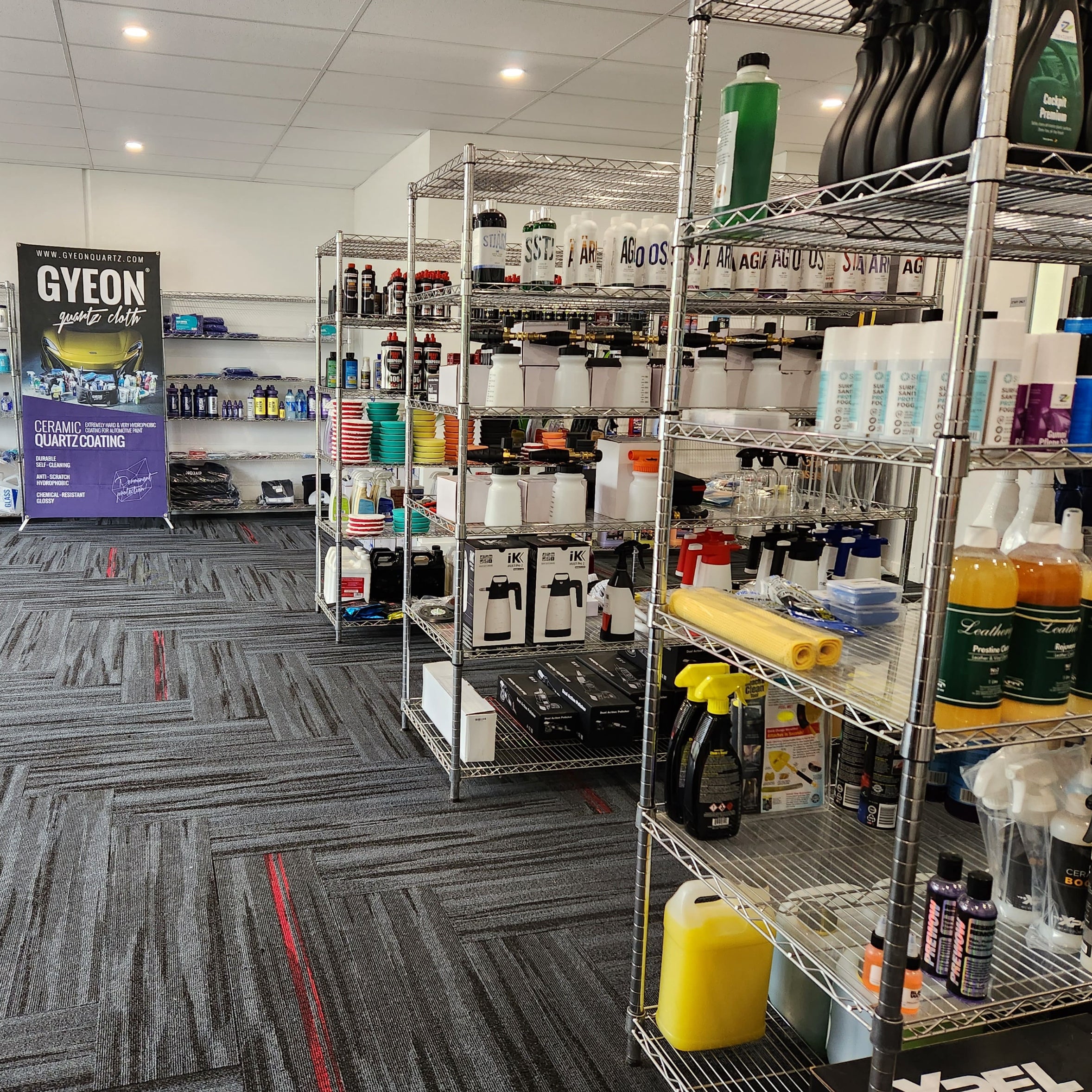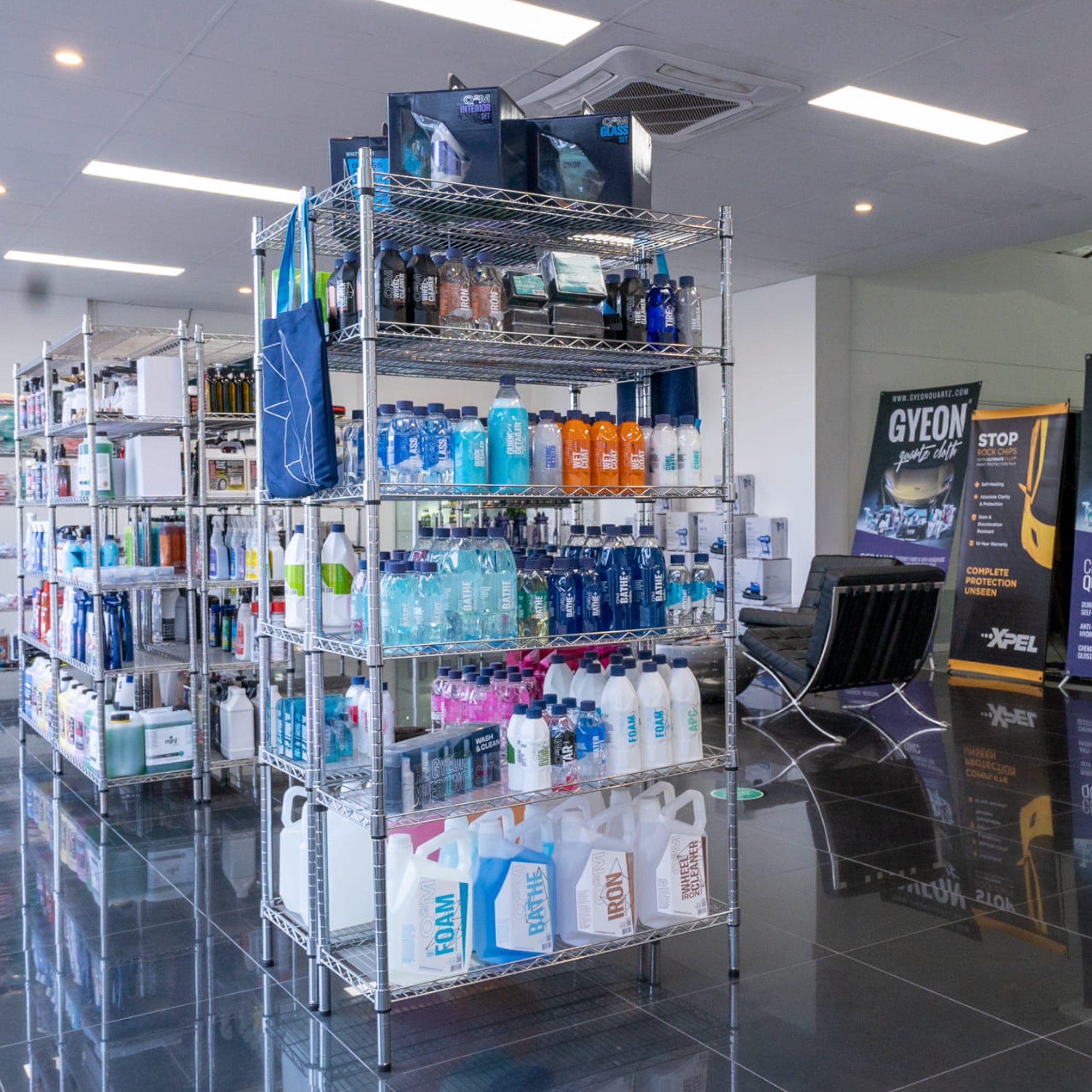There’s nothing worse than spotting a fresh scratch on your car after you've just washed and dried it. It might be a runaway trolley, a low-hanging branch, or just wear and tear from daily life, but that little mark instantly pulls attention away from your car's shine. The good news? There’s a good chance that you don’t need to book in at a detailing shop or spend hundreds to fix it.

With the right technique and the right product, you can remove most light to moderate scratches at home—and make your car look like new again. In this guide, we’ll walk you through everything you need to know: how scratches happen, how to pick the best polishing compound, and the exact process for getting professional-level results at home. Whether you’re a first-timer or a seasoned enthusiast, we’ve got you covered.
Understanding Car Scratches
Types of Scratches
Not all scratches are created equal. Before you jump into polishing, it’s important to know what you’re dealing with:
- Clear Coat Scratches – These are the most common and shallow scratches. They only affect the top layer of paint and are usually caused by poor washing or light contact. Good news: they’re the easiest to fix.
- Paint Scratches – These go deeper, into the colour layer beneath the clear coat. Still repairable, but will take more work and the right compound.
- Deep/Primer Scratches – If you can see metal or plastic, you’ve got a deep scratch. These can’t usually be fixed with polish alone and might need touch-up paint or even professional help.
Common Causes of Scratches
Scratches come from all sorts of sources:
- Dirty wash mitts or sponges
- Automatic car washes with harsh brushes
- Kids playing near the car
- Parking lot incidents
- Tree branches or roadside shrubs
Knowing the cause helps you avoid repeating it once your paint is looking fresh again.
Why You Should Fix Scratches Early
Small scratches might seem harmless, but they leave your clear coat exposed. Over time, that can lead to oxidation, fading, or worse, rust. Fixing them early isn’t just about keeping your car looking good; it’s about protecting the paintwork and resale value. Fixing them early with a high-quality polishing compound isn’t just about looks—it’s about protection and preservation.
What Are Polishing Compounds (and How Do They Work)?
Polishing compounds are abrasive liquids that gently level out the clear coat around a scratch, making it disappear to the naked eye. While different brands have different names for their products, most compounds come in two main categories:
● Heavy Cut Compounds: More abrasive, used for deeper scratches.
● Lighter Cut Compounds and Primers: Less abrasive, great for light scratches and removing swirl marks.
Polishing compounds essentially work by shaving off microscopic layers of the clear coat until the scratch blends in with the surrounding surface. It's vital to pair the use of these abrasives with a swirl remover to enhance effectiveness without harming the paint. This is where using trusted brands like Gyeon and Menzerna makes a big difference. Their formulations are designed for precision correction with minimal risk of damage, even for beginners when used correctly.
The Best Polishing Compounds to Use
There are dozens of compounds on the market, but only a few deliver consistent, pro-level results. Here are our most trusted brands:
GYEON Polishing Range
Gyeon has made a name for itself with their revolutionary ceramic coatings, but their compounds are just as impressive. The range is extensive, with products covering any DIY polishing requirements such as:
- Primer - for surface prep and removing light swirling;
- Polish - as the name suggests, the final touch to provide a great glossy shine;
- Compound - for medium cutting, a solid all-rounder;
- Compound+ - heavy cutting for removing tougher marks;

What Makes Gyeon Special?
- Minimal dusting during application
- Excellent finishing capability
- Ideal for both rotary and dual-action polishers
Menzerna Compounds
A global favourite among professional detailers for a reason. The prime example of German Engineering excellence, Menzerna offers everything from heavy cutters like their Menzerna HC400 to ultra-fine finishers like SF3500, as well as awesome combo and DIY friendly products such as their revolutionary Cut Force Pro.

Why It Works:
- German-engineered precision
- Consistent results for multi-step correction
- Excellent performance on hard European clear coats
Choosing the Right Compound for the Job
Match It to the Scratch
- Light Scratches: Use a finishing polish or Primer such as Gyeon Primer or Menzerna 3500. These are less abrasive and work wonders on swirl marks or superficial scratches, like those caused by fingernails. Remember to use a soft applicator pad to avoid introducing more scratches.
- Moderate Scratches: Go for a medium-cut compound like Menzerna MC2500. It has just the right amount of bite to tackle mild defects without being too harsh.
-
Deep Scratches: You’ll need a heavy-cut compound like Menzerna HC400 or Gyeon Compound+. But remember, deep scratches may never disappear entirely without proper paint correction with a professional.
Pro tip: Always start with the least aggressive product. If it doesn’t work, only then move to something more abrasive and consider following up with a finer polish to finish.
Match It to the Paint Type
Paint isn't a one-size-fits-all deal, and if you’ve done any polishing before, you’ll know not all paint behaves the same. These days, a lot of manufacturers (especially Japanese brands) are using thinner, softer paint systems to save weight. Meanwhile, some European marques still go for harder, thicker finishes — but that’s not a hard and fast rule either.
Older cars? Sure, they probably rolled out of the factory with a decent paint layer, but if they’ve seen a few too many summers without a respray, there’s a good chance that paint has thinned out over time.
Why does this matter? Because the less paint you have to work with, the more cautious you need to be when cutting and polishing. Get too aggressive on a thin clear coat, and you could do more harm than good.
That’s where a Paint Thickness Gauge comes in. It’s the best way to know exactly how much material you’re working with — and it can help you choose the right compound and approach. Most modern cars sit around 140μm, which gives you a decent buffer. But if you’re seeing readings under 70μm, you’ll want to back it off: softer pads, gentler compounds, and fewer passes. And if it’s really thin? Might be time to call in the pros.
No matter what, always do a test spot first. Even cars from the same model year can have variations in paint thickness. Don’t assume — measure, test, and adjust. Your paint (and your nerves) will thank you.
Step-by-Step Guide to Removing Scratches
Before you dive into the polishing process, make sure you have the right gear. Here's what you'll need:
- Your chosen polishing compound.
- Paint Thickness Gauge.
- Polisher, ideally a Dual-action or rotary model (or hand applicator for light work).
- Polishing pads – Softer foam for softer applications such as finishing, Microfibre wool pads for heavy cutting.
- Microfibre towels to wipe off any compound left after polishing.
- Masking tape for trims and sensitive areas.
- A quality surface cleaner like Gyeon Prep to remove any remaining residue.
Step-by-Step: How to Remove Scratches at Home
1. Preparation
Never polish a dirty car. You'll risk grinding in dirt and causing even more scratches. Follow these prep steps:
- Wash your car thoroughly using pH-neutral car shampoo.
- Clay bar the surface to remove embedded contaminants.
- Dry completely with a microfiber towel.
- Mask off delicate areas like rubber trims, plastic edges, or emblems.
- Inspect the scratches under good lighting.
Proper prep ensures the compound does its job effectively without introducing new damage.
2. Apply Compound
Now the fun begins. Regardless of the compound you are using, here’s a fairly standard rundown process:
- Apply 3-4 pea-sized drops to your pad.
- Blot the compound onto a 1x1-meter section of paint (the masking tape can be handy if you want to mark your sections clearly).
-
Start your polisher at low speed (2-3) to spread, then increase to (4-5) to work the compound.
- If you are noticing little change in the finish, gradually increase the speed until you notice a change.
- Use light-to-moderate pressure and overlapping passes, typically 5 passes per section.
- Wipe away residue and inspect results
3. Finishing Touch
- Switch to a finishing polish and softer pad to refine and enhance gloss
- Clean with Surface Cleaner to check for hidden defects
- Apply wax, sealant, or ceramic coating to protect the finish and lock in results.
And boom—just like that, your car looks fresh off the showroom floor!
Final Thoughts
Scratches are part of car ownership, but they don’t have to stay. With the right compound, pad, and a bit of patience, you can restore that deep gloss and clarity your paint once had. Brands like GYEON and Menzerna make it easy to achieve professional results, even in your garage.
No need to panic next time you find a scuff or scratch—just follow this guide, trust the process, and let your paint do the talking.
FAQs
1. Can polishing remove deep scratches? Only if the scratch hasn’t gone past the clear coat. If you see metal or plastic, polishing alone won’t fix it.
2. How often should I polish my car? When it is needed, really. Polishing when it is not needed can do more harm than good.
3. Do I need a machine polisher? You’ll get better results, faster. But for light scratches, hand polishing can still be effective.
4. What should I do after polishing? Seal in your results with wax, a paint sealant, or ceramic coating to protect the finish.
5. Are these compounds safe for all cars? Generally, yes, as long as you match the product to your paint type and follow best practices.







